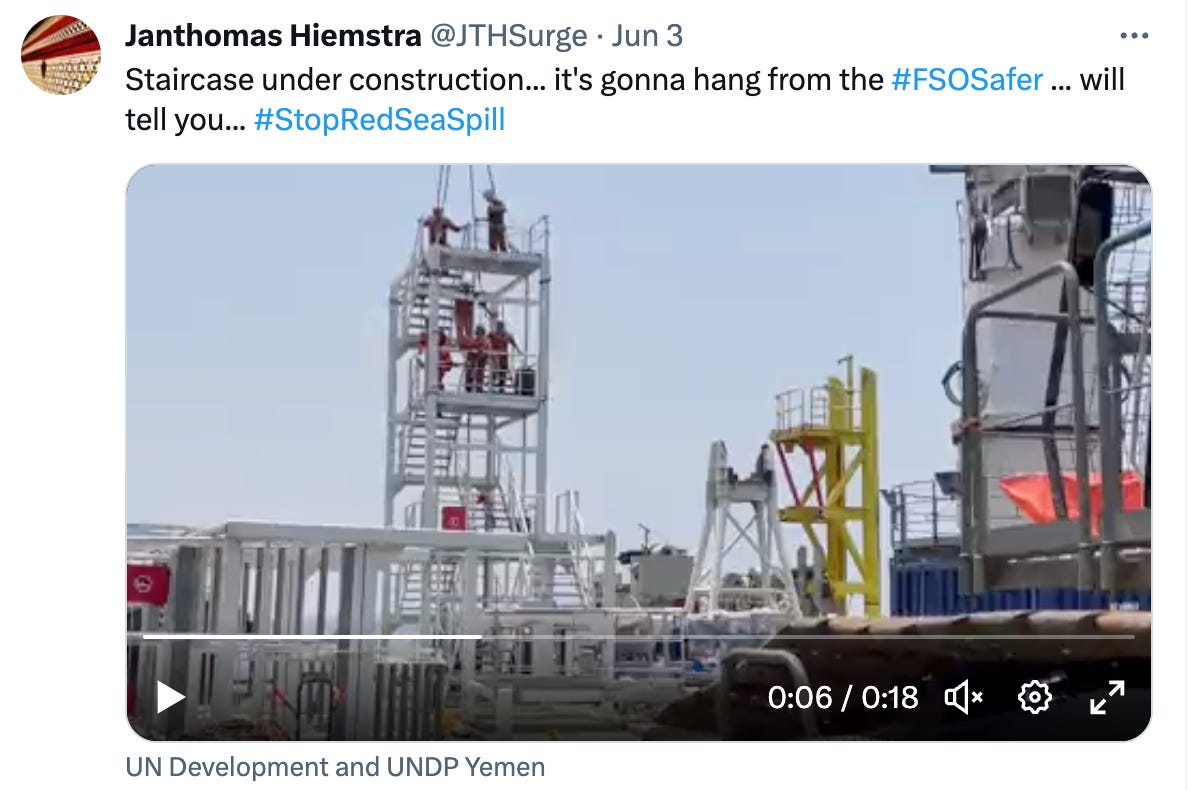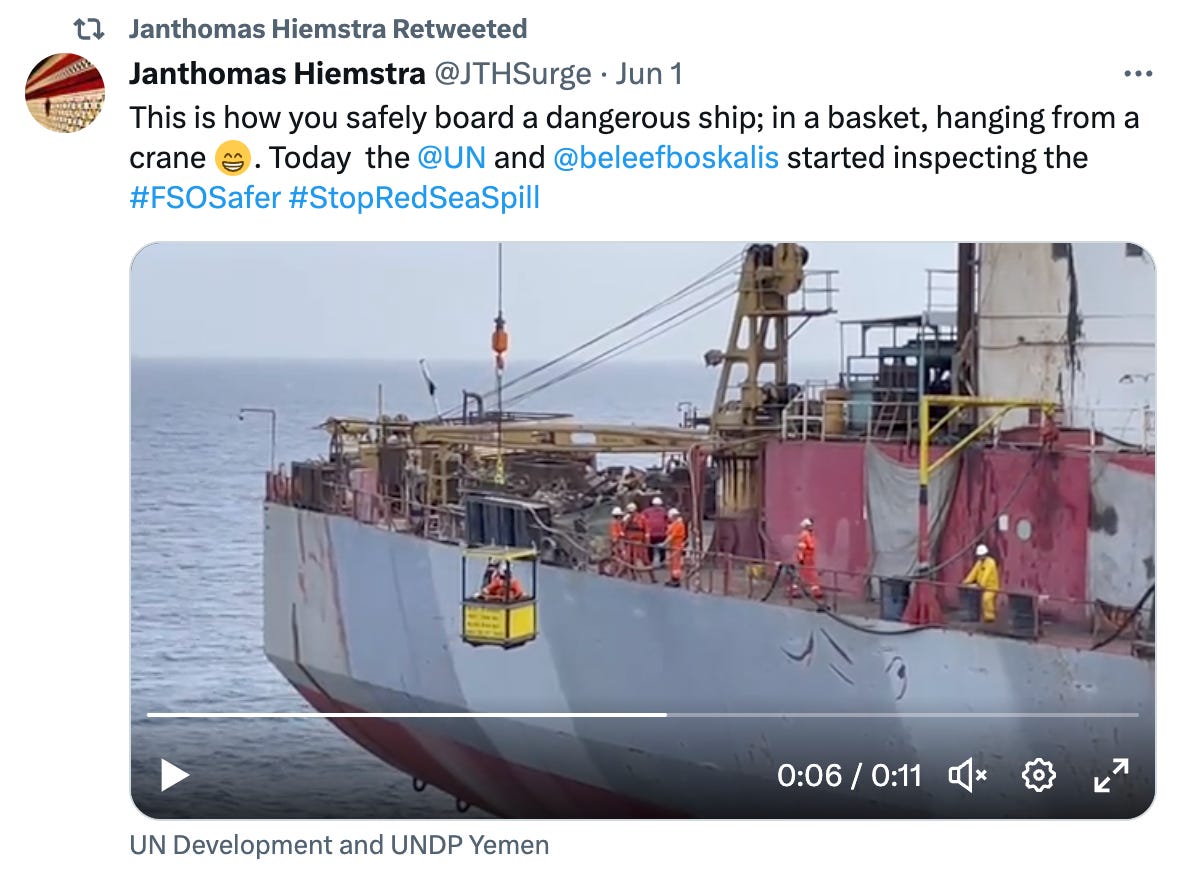FSO Safer: Update on SMIT's progress
Good progress is being reported. We also preview what is next.
It has been nearly two weeks now since SMIT Salvage’s support ship Ndeavor arrived alongside the FSO Safer and according to Boskalis, SMIT’s parent company, as of the 9th of June at least, things “are progressing well”.
Recap of original plan and timelines
Based on the original timelines and plan released by Boskalis, we should be nearing the end of the first phase. Before we get into the details though, just a quick recap on those main phases and timeline again, using as a starting point the 31st of May when SMIT crew first boarded the Safer:
Phase 1: 31 May - 16 June
Arrival alongside by salvage team on SMIT’s Ndeavor
Inspection of Safer by SMIT team
Stabilisation of oil storage tanks including pumping in of inert gases
Phase 2: Assumed 16 June (1 day travel)
Replacement vessel Nautica gets go-ahead to travel from Djibouti
Comes alongside Safer and moored
Safety precautions including installation of oil booms in seawater
Phase 3: 17 June - 5 July
Ship-to-ship transfer of oil
Phase 4: 7 July - 23 July
Cleaning of thick sludge and scrubbing of storage tanks
Dirty water transferred to Nautica
Progress of Phase 1
On 30 May the Ndeavor arrived near the site of the Safer:
The following afternoon, the team first boarded the Safer to commence their inspections:
These inspections would include the following:
Taking a variety of gas measurements inside the Safer to ensure it is “safe to access” for the salvage.
Visual assessments of key areas such as the pump and engine rooms.
The loading of mobile inert gas generators to fill the cargo tanks with inert gas.
Inspection of the stored oil in the tanks and the condition of the cargo and inert gas lines, valves and manifolds to determine if the salvage plan needs to be tweaked.
Also an inspection of the condition of the mooring arrangements as well as underwater inspections where required.
To allow more convenient boarding between the Ndeavor and the Safer, a mobile fixed staircase was built to replace the initial swinging basket, as highlighted by Janthomas Hiemstra, UNDP’s Head of Country Support on scene for the operation.
After all this has occurred, each of the oil storage tanks needs to be checked for stabilisation as a result of their flammable contents and a past lack of inert gases, and then be declared safe before the oil transfer can proceed.
Fingers crossed we are soon talking about Phase 2.
Addendum:
It was reported on 12 June that binding of insurance cover (i.e. confirmation that it is now in place and in force) for the ship-to-ship transfer and other aspects of the operation had occurred. This turns out to be a pre-requisite before the transfer can occur. During a UN press conference on 30 May, UNDP’s Achim Steiner had mentioned that late into Friday evening (around midnight) 26 May, negotiations between the UN, the insurance brokers Howden Group and a consortium of underwriters had successfully concluded. This had then allowed the Ndeavor to depart on 29 May from Djibouti for Yemen. The confirmation of binding would be the culmination of these negotiations. There will be a newsletter on the insurance aspect soon.





